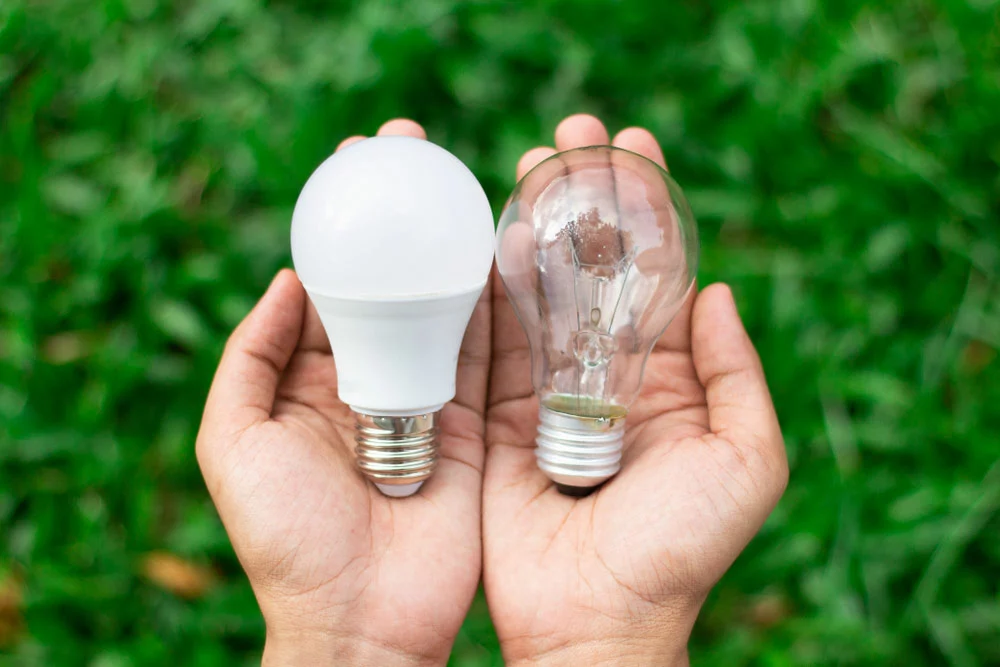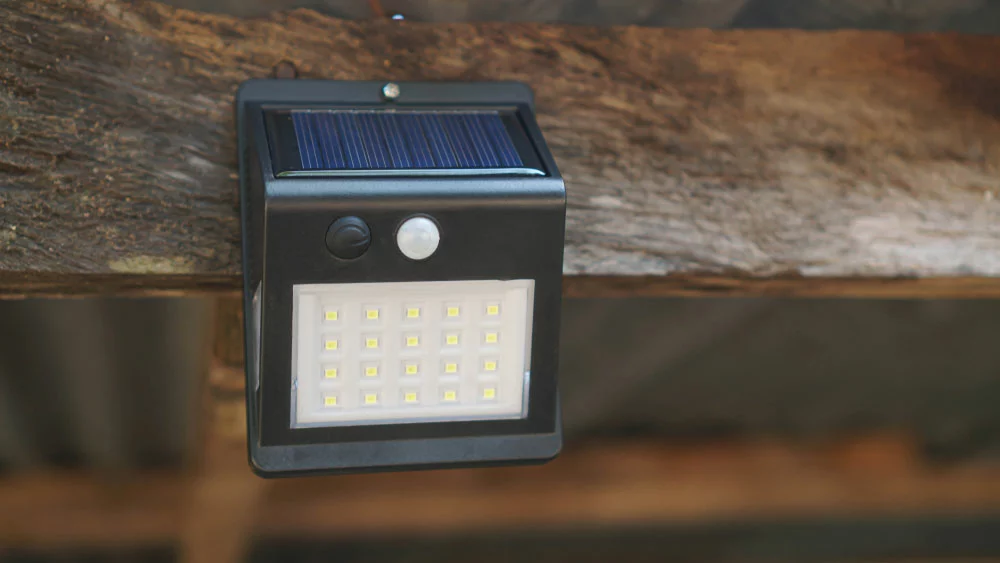No doubt, solar panels are life savers. They help to cut down electricity bills and our carbon footprint. But is this technology hopeless without the sun? No, it’s still incredibly effective. In truth, there are various ways you can charge solar panels during winter or in areas without access to sunlight. Also, you can set them with grid power or use other means. However, one particularly effective method is charging solar panels with LEDs. But wait a minute, can LED lights power solar panels?
Read on to explore how it works.
Can I Charge Solar Lights Without the Sun?

Solar Light
In truth, you can charge solar lighting systems in conditions or areas with little sunlight. All you need to do is opt for indirect sunlight. But you have to keep in mind that this method is less efficient.
Also, most methods apply to smaller solar lighting systems on pathways, patios, and lawns. Further, an AC hybrid or solar lighting unit can also use alternative energy.
How to Charge Solar Lights Without the Sun?
Let’s look at ways you can charge your solar lights without direct sunlight.
Use the Little Light from Cloudy/Winter Conditions
Although it seems impossible to power solar lights during gloomy weather, it’s only a misconception. In truth, solar panels charge better in colder temperatures.
Though there won’t be direct sunlight, small light beams will still hit your solar panel’s receptors. So, the panel’s PV cells will continue receiving, storing, and converting energy.
Also, the solar panel’s electrons will have minimum movement because of the cold temperature. Thus, allowing the solar system to generate more energy. In other words, your solar panel lights will charge even if the sun stays hidden on cloudy days.
Can LED Lights Power Solar Panels: Use Incandescent Light

Artificial Light
No doubt, incandescent lights are effective for charging solar lights. In short, artificial lighting is an excellent substitute because its wavelength and spectrum are similar to sunlight. Also, the PV cells react to the artificial lights and draw energy conveniently.
In other words, incandescent lights can charge various solar devices like solar calculators, watches, and flashlights. But, a charge can take two to five hours longer than natural Light.
Further, you can use this method by placing the incandescent bulb a few inches away from the panel. Also, you can charge for about six to twelve hours, depending on your bulb’s wattage.
Note: 40W to 100W bulbs provide the best results.
Charge with LEDs

LED bulb
Similarly, you can use LEDs to power your solar lights. While they may offer the results as incandescent, LEDs run in a broader spectrum range. Hence, they offer more benefits than their filament counterparts.
Other Substitute Charging Methods
Some solar lights support USB charging. So, you can connect them to power banks or wall sockets for convenient charging. However, it may cost more than other methods.
How to Charge Solar Lights in Winter More Effectively
Here’s how to ensure that your solar lights stay charged during winter:
Clear all Particulates from Your Solar Panel’s Surface
Since panels have a flat surface, it’s subject to snow and dust accumulation. But, keeping the surface clean is crucial to avoid difficulties with charging during winter.
Thankfully, it’s easy to clean your panel’s surface without damaging the PV cells. You can use a microfiber cloth soaked in clean water to wipe the surface. While at it, avoid using detergents unnecessarily to prevent streaks on your panel.
Note: Streaking makes it challenging to get a full charge during winter.
Modify your Solar Light’s Angle to Receive more Light
It’s crucial to watch how you position your solar lights. Otherwise, they won’t charge efficiently if the panels face darker areas. So, ensure that your lights face the sun’s direction, especially during winter.
Also, you can try changing their positions to areas with more sunlight. Further, avoid placing them under tall trees or near shadows. And allow them to charge for eight to ten hours.
Use Mirrors to Reflect Sunlight on Your Panels
Mirrors help to get more sunlight for your solar lights during winter. It’s incredibly efficient and allows you to maximize the little solar rays. However, it requires a lot of labor, as you’ll constantly move the mirrors to get the best lighting.
While at it, ensure you use mirrors bigger than the panels to reflect as much sunlight as possible. And the mirrors should stand in diagonal positions from the ground. That way, placing them above the solar panels won’t be necessary.
Note: You can use up to four mirrors depending on your panel’s size.
Opt for a Deep Charge
Deep charging requires switching off your solar lights for up to seventy-two hours. Then, it’ll continuously charge the battery and keep it running efficiently. Additionally, you can use this method once or twice a month since it takes a while.
Is Charging Solar Panels With LEDs Efficient?

Solar LED light
LEDs are not as efficient as direct sunlight. So you’ll have to wait longer when using this method. However, you can rest assured that using LEDs won’t damage your solar panels.
Moreover, this method requires several hours before producing output, and it could take weeks for a full charge. But it’s more efficient than incandescents for charging indoor solar lamps.
What are the Disadvantages of Trickle-charging Solar Panels with LEDs?
While it’s safe to do a little bit of charging occasionally, constant use of LEDs may affect your solar batteries.
It’s also worth mentioning that charging solar panels off USB or AC outlets may be unsafe. Such power sources won’t energize the cells adequately, leaving your batteries undercharged.
Final Thoughts
So, can LED lights power solar panels? Yes! In short, your solar panels are still useful without direct sunlight. Also, other alternatives can trickle-charge your panels. But they are less efficient.
Using artificial lights or setting up several mirrors can save you from your solar charging issues. Interestingly, you can use these simple hacks for other solar equipment.
Have more questions about LEDs? Feel free to contact us, and we’ll be happy to assist.
